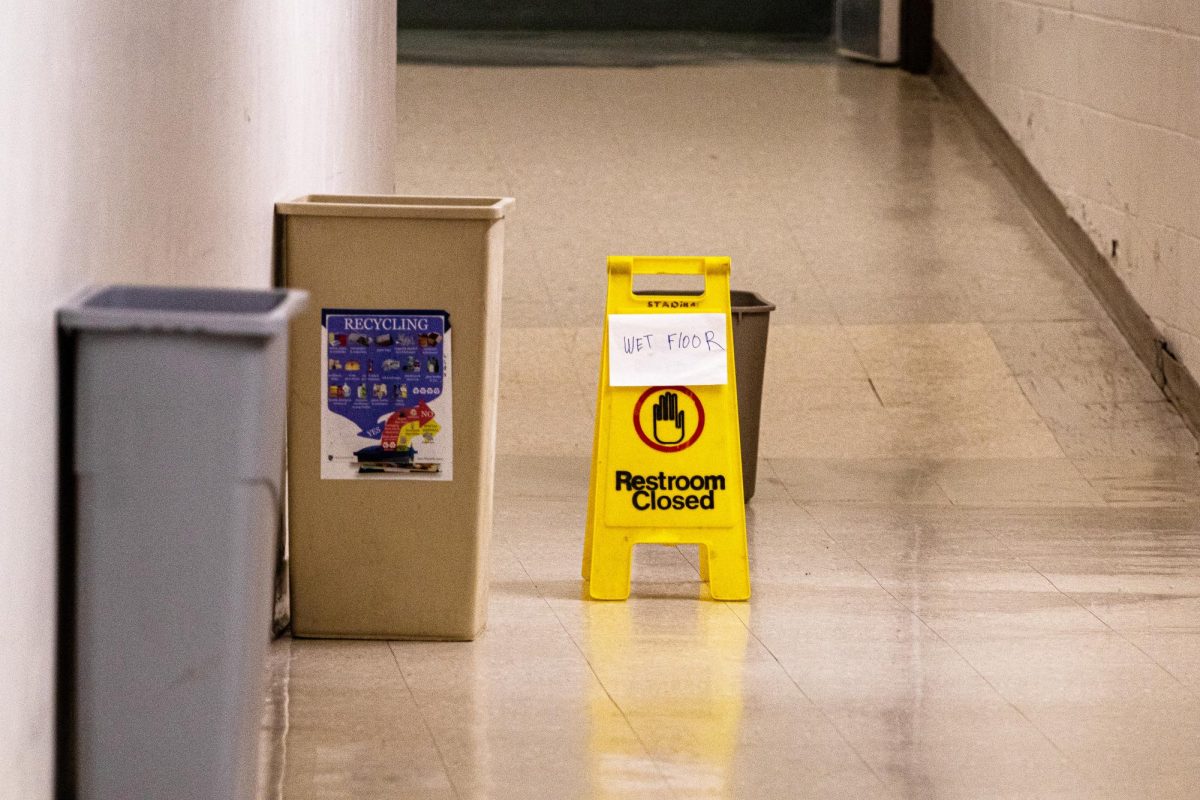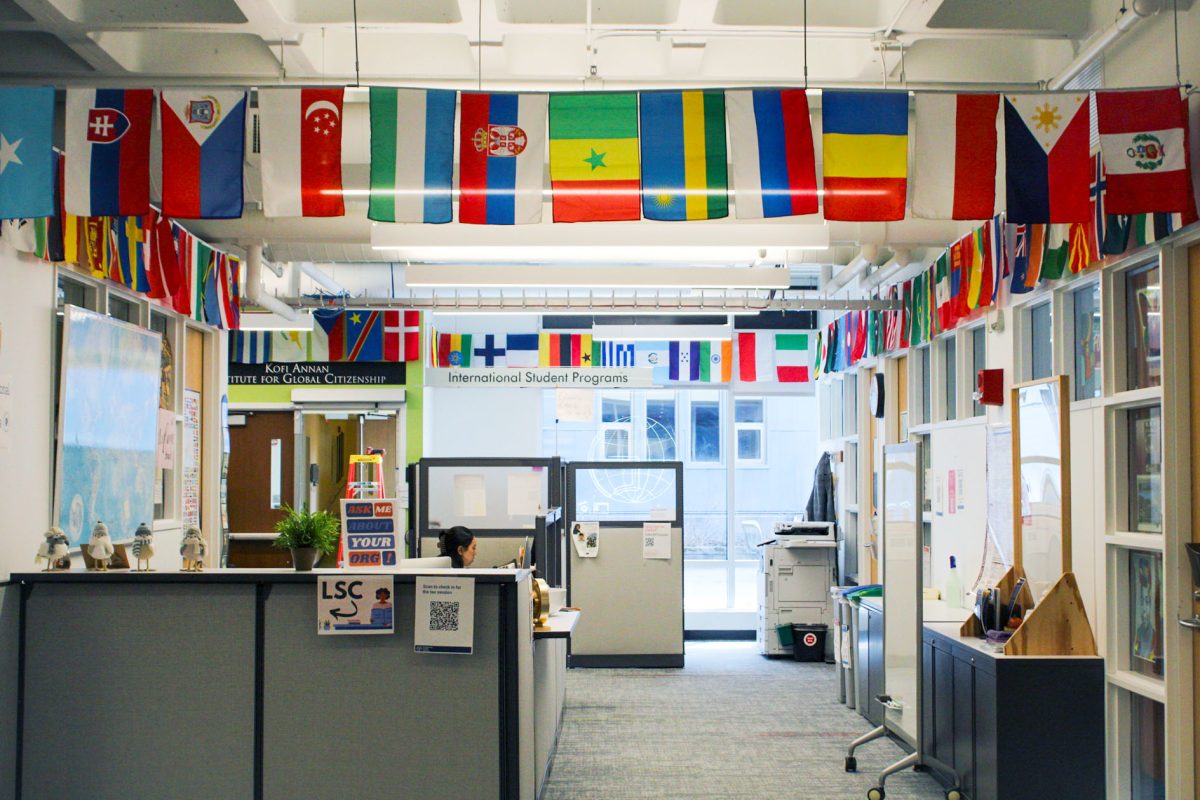On Aug. 19, Residential Life sent an email to all Macalester students who are living on campus or are registered for a meal plan, informing them of the addition of a biometric scanning system to Cafe Mac. This new system was just one piece of the 8 million dollar renovation that transformed the Ruth Stricker Dayton Campus Center while students were away on summer vacation, drastically altering the look and feel of the 23 year old building. The institution of new turnstiles in front of Cafe Mac on the first floor initially appeared unremarkable, but quickly became the subject of conversation and speculation.
The biometric technology allows registered students to enter Cafe Mac with a simple wave of the hand, eliminating the former need to scan an ID card. Though some have eagerly adopted the new system, and first-year students were encouraged to register their handprints as a part of their check-in to Macalester, many remain skeptical. The resulting discourse has raised questions not just about student privacy and college spending, but the ethics of biometric identification as a whole.
In order to use the new turnstiles at Cafe Mac, a student must first allow a scanner (manufactured by biometric company IDEMIA) to take pictures of their fingers. The machine analyzes those pictures, looking for distinctive features like fingerprints. It then deletes said pictures, and uses the features it found to generate a unique visual pattern called a ‘template’. This template is stored as binary code, a long string of ones and zeros.
The template is sent to a remote server, using something called TLS 1.2 encryption. Transport Layer Security (TLS) is a security protocol intended to protect computer files from malicious tampering. The server then sends the template to an encrypted database inside the MorpoWave hand scanners at Cafe Mac. Whenever a student waves their hand at a Cafe Mac turnstile, the scanners try to match the unique features of their fingers to those of a template in the database. If a match is found, then, voilà! The turnstile gates open and the student can go enjoy their meal.
According to the company’s website, IDEMIA biometric technology has been used by major corporations such as Microsoft and Telefónica, and federal organizations including the U.S. Transportation Security Administration. IDEMIA claims that its scanners are completely safe to use, as it is impossible to reverse-engineer any machine-generated template into an actual image of a person’s fingerprints. This means that, even in the unlikely event of a data breach, Macalester students would not have to worry about their fingerprints being stolen.
Macalester students are not required to register for biometric identification, and are free to keep using their ID cards to enter Cafe Mac, if they so choose.
A number of students expressed concerns over the college spending its funds on this biometric technology.
“[There are] so many better ways that Macalester can be spending their money,” Adisa Preston ’25 said. She also questioned the purpose of the new system. “You have a card.” she remarked, “You could use your card.”
Other students conveyed discomfort with the idea of using biometric technology. Sol Landman-Feldman ’26 said that, although he knew the hand scanners were safe, the idea of giving his handprint to Macalester felt “a little bit weird.” He noted that he had not used the new scanners, and that he felt no pressure to register with the biometric system.
Students who do use the hand scanners have noted that they do not always function as intended.
“It usually helps me skip the line and get into Cafe Mac instantly,” Soap Robinson ’28 said, “but for some reason it never works for me at dinner. Scanning my hand works at all meals except dinner, where I then have to scan my ID.”
Vice President of ITS and CIO Jenn Haas expressed ITS’ forthcoming goals with technology usage at Macalester, and commented on what kind of shift this development might represent within the college’s wider technological ecosystem:
“We strive to transform the student experience through technology,” Haas explained in an email to The Mac Weekly. “MacNav and its integration with Slate is another example of digitizing the experience and one that we have plans to expand (modernizing 1600 Grand is high on our list). Incoming students saw the new student checklist through MacNav when they authenticated in the app. We plan to continue to add to MacNav so that the technology presented meets the student where they are in their Macalester experience.”
Similarly, Haas expressed her advice for students in their decision making process regarding the biometric scanners.
“It is important to be cautious about allowing any technology to capture your data or likeness, so I encourage students to do their research when presented with this option,” Haas wrote. “We … allow card entry so that anyone who is uncomfortable with the hand scan has another option.”
The implementation of these scanners signal that Macalester follows a broader trend on college campuses, and in society in general, towards incorporating new technology. As this development continues, the reactions of students have tremendous power in shaping what technologies the college chooses to adopt.








